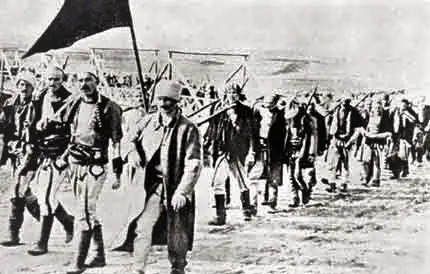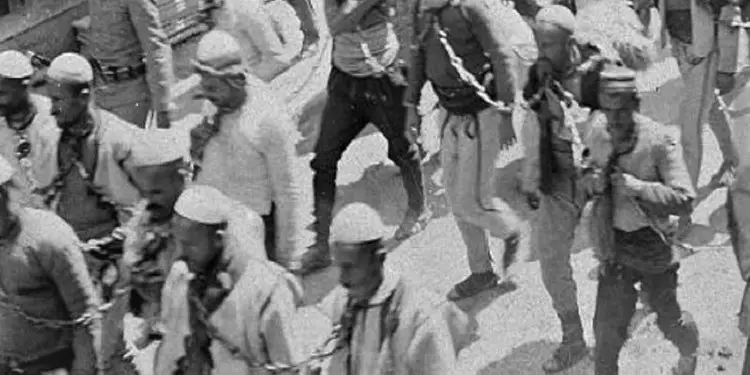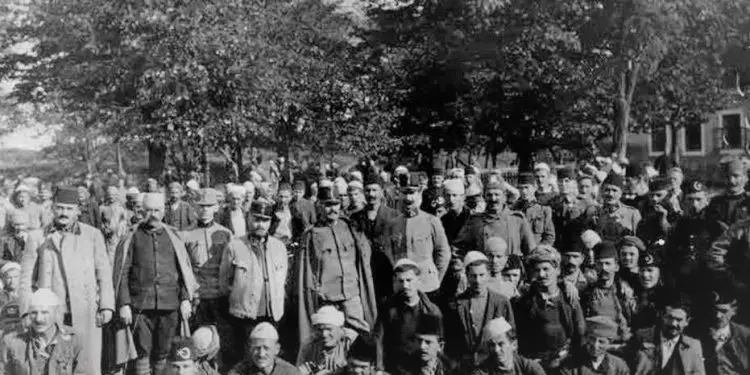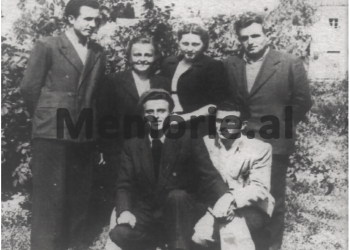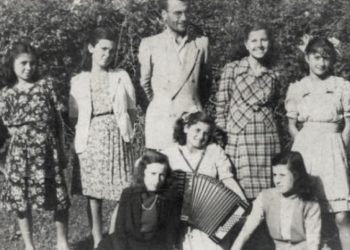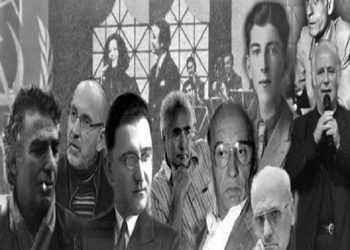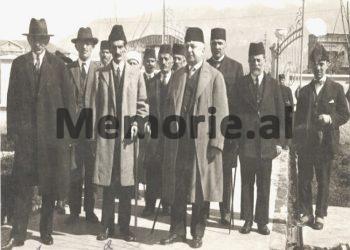From Bashkim Trenova
The sixth part
ALBANIANS ACCORDING TO THE SERBS
(THE EASTERN CRISIS AND THE BALKAN WARS)
Memorie.al / “Serbs are descended from the Slavs, a large number of tribes who gave life to the Slavic peoples. Knowledge about the origins of the history of the Slavs is modest and not so clear. Their name appears for the first time in the 6th century AD, when Byzantine writers start talking about the Slavs….”! (Dushan Bataković, Milan St. Protic, Nikola Samardžić, Aleksandër Fotic. History of the Serbian People. L’Age d’Homme. Lausanne. 2005. Pg. 3.)
Continues from last issue
INSTEAD OF THE PROLOGUE – A PROJECT, TWO MEMORANDA AND AN ANALYSIS
The Project or Nacertania of Ilia Garasanin – politician, prime minister of Serbia during the years 1852-1853 and 1861-1886:
MYTH-MYSTICISM, VICTIMOMANIA, RACISM AND SERBO NOSTALGIA
Aleksandar Belič – philologist and linguist, professor and rector of the University of Belgrade, president of the Serbian Academy of Sciences and Arts, member of several academies in the former Yugoslavia:
And so it happened that in Kosovo there is hardly any village without Arnauts, in some of them they are even more numerous. Kosovo was drowned with these Arnaut garrisons, which did not only enjoy themselves in the cities, but also went down to the villages to annihilate our tribe to the roots.
Today, the Albanian army has been defeated, the Albanian settlements, which were an integral part of it, withdraw and move, just as the rear is withdrawn when the army retreats. Despite the peaceful attitude of the Serbian proclamation, which gives all the inhabitants freedom and equality, the Arnaut villages move away as they feel the full weight of their sins. The Arnauts retreat to the mess. (1)
****
Aleksandra Kolakovic – historian and researcher at the Institute of Political Studies in Belgrade:
The Kingdom of Serbs, Croats and Slovenes, in addition to external problems (with its neighbors Italy, Austria, Hungary, Bulgaria and Albania), faced
—-
1 – Aleksandar Belic. Politics, 15.10.1912.
Even with internal problems. In Kosovo, there were gangs of kachaks – illegal Albanians, whom the royal army managed to defeat only in 1924. The idea of the League of Prizren was revived and the Committee of National Defense was created in Shkodër. His first victim was a friend of Serbia, Esat Pasha Toptani (1863-1920), killed in Paris. (1)
****
Athanase Jevtic – bishop of the Serbian Orthodox Church:
Our Serbian people had already chosen the heavenly empire long before the Battle of Kosovo… In Kosovo, their glorious choice was confirmed and sealed with the blood of martyrs. Only by sealing it with their own blood, and no one else’s, has the new holy Serbian martyrs—those of Turkish slavery as well as those of later times and those of the most recent tyranny of the exodus—confirmed and reconfirmed this choice. . (2)
——
…. The Serbian people created Yugoslavia, but only after paying for it with the blood of its countless innocent victims up to the martyrs of the Way of the Cross along Kosovo and Albania, killed in good part by “false brothers” Albanians. It is these traitors of their Christian religion, these Turkified and these serviles of the rulers of the new times, for many centuries the main torturers and causes of the expulsion of the Serbs from Kosovo…. To expel the Serbs, they were once helped by the Turks, the Austrians, the Germans and the Italians. Today’s martyr of the Serbian people in Kosovo should be seen not only as a national martyr, but also as a Christian martyr of the Blessed Cross and faith in Christ. … (1)
———-
1 – Aleksandra Kolakovic. La France, protectrice des slaves. (France protector of the Slavs). Revue des études slaves (Online), XCI 1-2/2020. Pg. 29.
2 – Athanase Jevtic. Kosovo dossier. (Kosovo file). L’Age d’Homme. Lausanne. 1991. Pg. 5.
…The permanent terror had economic and social consequences, but above all demographic: the numerous migrations, completely changing the ethnic physiognomy of Old Serbia and Kosovo. Every Serbian emigration has been followed by a new wave of Albanian penetration. If statistical data are missing for the earlier eras, we can follow the events more closely from the 19th century. After the Russo-Serbian-Turkish war of 1876-1878, the territory with a depth of 60 kilometers, which separates the city of Pristina – the main city of the Kosovo region – from the Serbian borders, has been emptied by Serbs and populated by Albanians. The Turks settled 30,000 Albanians in the Kosovo region alone. Starting from this date until the Serbian-Turkish war of 1912, 400,000 Serbs emigrated from Turkey to Serbia….
The Albanian population grows almost to the same extent; in Kosovo in 1880 there were about 240,000 Albanians, while in 1941 they were already 600,000. And meanwhile, at the beginning of the 20th century, the Serbs of Turkey (Kosovians), for better or for worse, manage to hold on. Regrettably! What the Turks did not achieve during four centuries, the joint efforts of fascist Italy and Tito’s communist Yugoslavia will achieve in a few decades…
In 1912, after freeing Albania from the Turkish occupation – with the help of Montenegrin troops, who took the city of Shkodra in 1913, – Serbia was deprived of the fruits of victory: the Western powers seized the Albanian territories from it without any compensation and declared Albania a state of independent. (2)
—
1 – Athanase Jevtic. Kosovo dossier. (Kosovo file). L’Age d’Homme. Lausanne. Pg. 55-56.
2 – Ibid. Pages 182-183.
****
Borivoje Zh. Milojevic – geographer, professor of the University of Belgrade and academician of the Serbian Academy of Sciences and Arts:
Similar colonizations have been made mainly by the inhabitants of the surroundings of Shkodra. Albanians who came from this region to graze cattle in Bjeshke and Namuna settled at the foot of the mentioned mountain. There are Albanians in the south of the city of Gucia. They came from the village of Nikça at the beginning of the 20th century. Many Albanians from the surroundings of Shkodra, whose ancestors were Catholics, have settled there even before; first they took the cattle to graze in Bjeshke and Namuna. Then, after the migration of the Serbs from the Upper Lim basin, a migration that was stopped by the patriarchs of Peja, they, at the beginning of the 18th century, settled at the foot of the mentioned mountain. Later these Albanians embraced the Muslim religion and a small part remained Catholic. The shepherds of Shkodra passed through the northern passes of Bjeshke i Namuna and settled on the eastern side, that of Metohija, especially in the valley of Bistrica i Peja. (1)
——
…Albanian families, whose ancestors came from the surroundings of Shkodra, live in the villages of Rugova, a region located in the already mentioned valley: until then they took their cattle to pastures in Bjeshke and Namuna and the settlements of they became stable there only after the emigration of Serbs. Even the Albanians of Rugova came from their country as Catholics, but under the Turkish yoke they became Muslims. …The valleys and passes that cross the mountains are of great importance for the movement of the population. This is particularly clearly observed in the case of Sharri Mountain. The Prevalla pass on the northwest side of this mountain separates the region of Sredska in the southwest from that of Sirinić in the northeast. Albanians who came from the west passed through this pass to settle in some villages of Siriniq, such as Firaja, and especially further in the Kosovo basin. This passage was important for the migration of the Albanian population to Kosovo. The other necks of Sharri were important for the colonization of the Pollog basin by the Albanians. …(1)
—
1 – Borivoje Zh. Milojevic. Les Hautes montagnes dans le royaume de Yougoslavie. (High mountains in the Kingdom of Yugoslavia). Belgrade 1939. Pg. 260.
—
… the Albanian population that came from the west settled in the valleys of Mount Sharr and partly in the basin of Pollog. Coming from the west, from the Luma region, and penetrating through the Bistrica valley of Prizren, part of the Muslim Albanians settled in the Srecka region while others, crossing the Prevalla Pass, settled in Sirinic; along this road, at the same time, the Albanians moved towards the Kosovo basin. Going from the valley of Bistrica in Prizren towards the southeast, through its secondary valleys, towards the passes from Kobilica and Kara-Nikolica, the Albanians of the Highlands settled in several villages on the side of Prizren, to the northwest of the mentioned passes. These colonizers made great changes in the Serbian population. In many villages of the aforementioned valleys, the Serbs converted to Islam, thus embracing the same religion as the Albanians. Then the adults, outside the home, learned Albanian and even adopted the Albanian costume, while the women and children, staying at home, continued to speak Serbian. This is how the Albanian Serbs became, i.e. “Arnautashe”. When these men, now Muslims, married Albanian women, their children learned Albanian as their mother tongue. From all the villages, located in the northwest of the Kara-Nikolica pass, only one is entirely Albanian, all the others are populated with Albanianized Serbs. Almost all the villages are Albanian in the Bistrica Valley of Tetova, on the side of Pollog, southeast of the Kobilica pass and —— ———————
1 – Borivoje Zh. Milojevic. Les Hautes montagnes dans le royaume de Yougoslavie. (High mountains in the Kingdom of Yugoslavia). Belgrade 1939. Pg. 261.
Kara–Nikolica. The same is true in the Novoselska Reka valley, southeast of the Djini-Beg pass, and then in the Mazdraça valley, southeast of the Golema Pass and Mala Vracas. Albanians populated not only these valleys, located below the necks, but also the Polog basin in large numbers. …Albanians from the surroundings of Shkodra from the valley of Cijevna and through the neck that separates this valley from that of the Vermoshi River, penetrated into the region of Plava and Gucia; from here, passing through the aforementioned passes, they occupied the valley of Bistrica i Peja and further east they reached the basins of Metohija and Kosovo. (1)
****
Boshko I. Bojović – historian of the Middle Ages, Byzantine Empire and Ottoman history, professor at the University of Paris 1 and Master of Studies at the Institute of Balkan Studies of the Serbian Academy of Sciences:
And while the distinguished Ottoman diplomacy strove before the European powers to delay as much as possible the reforms which the Porte had undertaken to carry out, public opinion in the Balkans, the situations created on the ground, the operations of rival factions in Macedonia and elsewhere, anarchy and insecurity, as well as the actions of the Muslim Albanians against the Christian peoples in what was then called Old Serbia, favored the revival of tensions. The inability of the five Great Powers to push the High Porte to make substantial reforms in these three Balkan provinces could do nothing but encourage the Balkan countries to impose a joint solution by armed means. (2)
—–
1 – Borivoje Zh. Milojevic. Les Hautes montagnes dans le royaume de Yougoslavie. (High mountains in the Kingdom of Yugoslavia). Belgrade 1939. Pg. 262-263.
2 – Boshko I. Bojovic. Les Balkans, les grandes puissances et la grande guerre. De cause à effet. (The Balkans, the great powers and the great war. From causes to consequences). Serbica (electronic magazine) N. 28 / 2021.
—
….The expansion of the Serbian kingdom in the 13th and 14th centuries would continue at the expense of Byzantium, towards the southeast, which made the border region of Kosovo and Metohija the central region of the country. At the beginning of the 13th century, the former seat of the great zhupans, the city of Raša, was abandoned in favor of new seats (Serbian kings, like other sovereigns of the era, had many main residences), which were mostly located in the region of Kosovo and Metohija, the most important of which are in Prizren, Păuni, Nerodimlja, Stimlja, SvrCin, Pristina (in the XIV century). As for the seat of the Archbishop of Serbia, originally established … in 1219, since the time of Archbishop Arsene I (1233-1263), it was gradually moved to the region of Peja (Hvosno district in Metohija), where the archdiocese owned large areas of land. When the Archbishopric of Serbia was raised to the level of a patriarchate in 1346, Peja (Ipec) became the patriarchal seat. So, from the end of the twelfth century the entire region of Kosovo and Metohija would be part of the Serbian state until 1455, the date of the Ottoman occupation of this part of medieval Serbia…. (1)
—
Since the end of the 12th century, the entire region of Kosovo-Metohija became part of the Serbian state, continuing thus until 1455, the date of the Ottoman occupation of this part of medieval Serbia, that is, four years before the fall of the capital Smederevo (1459). During these almost three centuries, the region of Kosovo-Metohija is the vital center of political, economic, religious and cultural activity of Serbia. Nothing to be surprised as long as this region represents a historical and cultural wealth, the concentration and value of which is not found in other parts of Serbia. (2)
The emigration coming from the mountains of today’s central Albania, the cradle and nest of Albanians, was favored by the land extension of Serbia during the XIII-XIV centuries. Starting from Central Albania, the extent of the Albanians reached today’s Northern Albania at the end of the 12th century….
—-
1 – Boshko I. Bojovic. Le passé des territoires: Kosovo – Metohija Xle-XVIIe siècle. (The past of the territories: Kosovo-Metohija. XI-XVII century). Balkan Studies, 1997. Pg. 37-38.
2 – Right there. Pg. 38.
—
…only at the end of the 12th century, the Albanian highlanders became neighbors of the Metohija region. Before the great victories of Tsar Dushan (1331-1355), which included among others Epirus, Thessaly and today’s Central Albania (excluding the city of Durrës), the borders of Serbia extended to the river Mat. King Milutin (1282-1321) became lord of the city of Durrës for several years. The other Serbian dynasties and land lords were able to hold some parts of Albania, Epirus and Thessaly until the victory of the Ottomans. The sedentarization of nomadic shepherds coming from the mountains to the west of Metohija caused the beginning of a mixture of the peasant population with the Vlachs in the middle of the 14th century. The fiscal registration, beginning after the establishment of the Ottoman administration in 1455, reveals a number of Albanian names in 80 rural settlements distributed in more than 600 villages that were the object of the registration. The distribution of these names shows us, therefore, that precisely at this time the progressive and spontaneous entry of Albanians began, while their sedentarization in the fields of Kosovo and Metohija cannot be proven before this time… Of the three dynasties that ruled Serbia from the 12th to the 15th century, two originated from Kosovo, which further testifies to the importance and essential character of this region for the Serbian state in the Middle Ages. (1)
…Only when the Ottoman Empire went into defense (XVII century), Islamization accompanied by colonization by Islamicized Albanian shepherds, began to be favored by the Ottoman administration. (2)
—-
1 – Boshko I. Bojovic. Le passé des territoires: Kosovo – Metohija Xle-XVIIe siècle. (The past of the territories: Kosovo-Metohija. XI-XVII century). Balkan Studies, 1997. Pg. 40-42.
2 – Right there. Pg. 53.
—
…From the end of the 16th century and especially the beginning of the 17th century, the growing uncertainty was a foreshadowing of the beginnings of the long crisis that would shake the Ottoman Empire. The importance of communication routes and the wealth of the region as well as the proximity of the Albanian and Montenegrin mountains favored a particularly difficult situation in Kosovo-Metohi, which would continue to deteriorate, especially at the expense of the most disadvantaged sections of society, since in this case they were those of the Christian faith. This situation, with the Austro-Turkish wars, would lead to the great exodus of Christians at the end of the 17th century and the first half of the 18th century and to a significant Islamization of all layers of the local population or immigrants. (1)
—
…Fleeing Turkish reprisals, tens of thousands of Serbian families, led by their patriarch, left Kosovo and Metohija and the surrounding regions and took the path of exodus in the wake of the Christian army. In this first great biblical retreat, they carried the relics of their saints, just as the children of Israel once carried the Ark of the Covenant through the wilderness. Accompanied by a large number of Catholic Albanians (mainly from Northern Albania, the Sanjak of Novi Pazar and Kosovo-Metohia), this exodus would end up in the plains of southern Hungary, Slavonia and further north of Budapest….
….While Kosovo-Metohia remained the central part of Serbia, it was the cradle of Serbian civilization in the middle Ages….
…The famous battle of 1389, with the “Testament of Kosovo” (Kosovski zavet) left deep traces in the Serbian collective consciousness until modern times. (2)
—
1 – Boshko I. Bojovic. Le passé des territoires: Kosovo – Metohija Xle-XVIIe siècle. (The past of the territories: Kosovo-Metohija. XI-XVII century). Balkan Studies, 1997. Pg. 56-57.
2 – Right there. Pg. 60.
——
Italy, irritated by the non-implementation of the secret agreements of London (1915), deprived of the dream of a “mare nostrum” for the Adriatic, the revanchism of Austria and Hungary, were the main opponents of the Serbian-Slovenian kingdom. The USSR, which Yugoslavia did not recognize until 1940, was no less hostile to it. (1) Memorie.al
The next issue follows




